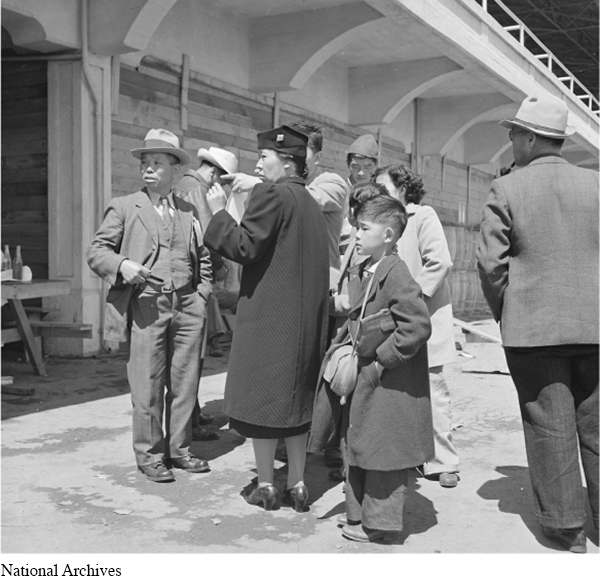8.1 CENTRAL TEXT
from When the Emperor Was Divine
Julie Otsuka

Julie Otsuka (b. 1962) was born in California and received degrees from Yale and Columbia. Her most recent novel is The Buddha in the Attic (2011). Her first novel, When the Emperor Was Divine (2002), from which this excerpt is taken, is about the internment of Japanese Americans during World War II.
KEY CONTEXT Not long after the Japanese attacked Pearl Harbor in December 1941, leading the United States to enter World War II, President Franklin D. Roosevelt signed Executive Order 9066, which gave regional military commanders the right to remove “any and all persons” from specific areas of the country as “protection against espionage and against sabotage to national-
Otsuka has said that When the Emperor Was Divine is based upon the experiences of her own grandmother, mother, and uncle, who were forcibly removed from their home in Berkeley, California, and imprisoned in a camp in Topaz, Utah, for three years. Her grandfather was arrested by the FBI the day after the Japanese attack on Pearl Harbor and held in various detention centers until 1945, though he was never charged or convicted of a crime.
The novel is made up of five chapters, each told from the different perspective of an unnamed family member. The characters are identified only as “mother,” “girl,” “boy,” and “father.” Chapter 1, called “Evacuation Order No. 19,” focuses on “mother” and the process of her being forced from her home and seeing her husband arrested. Chapter 2, “Train,” focuses on the eleven-


The author’s family at the Tanforan Assembly Center, in a National Archives photograph taken by Dorothea Lange, April 29, 1942.